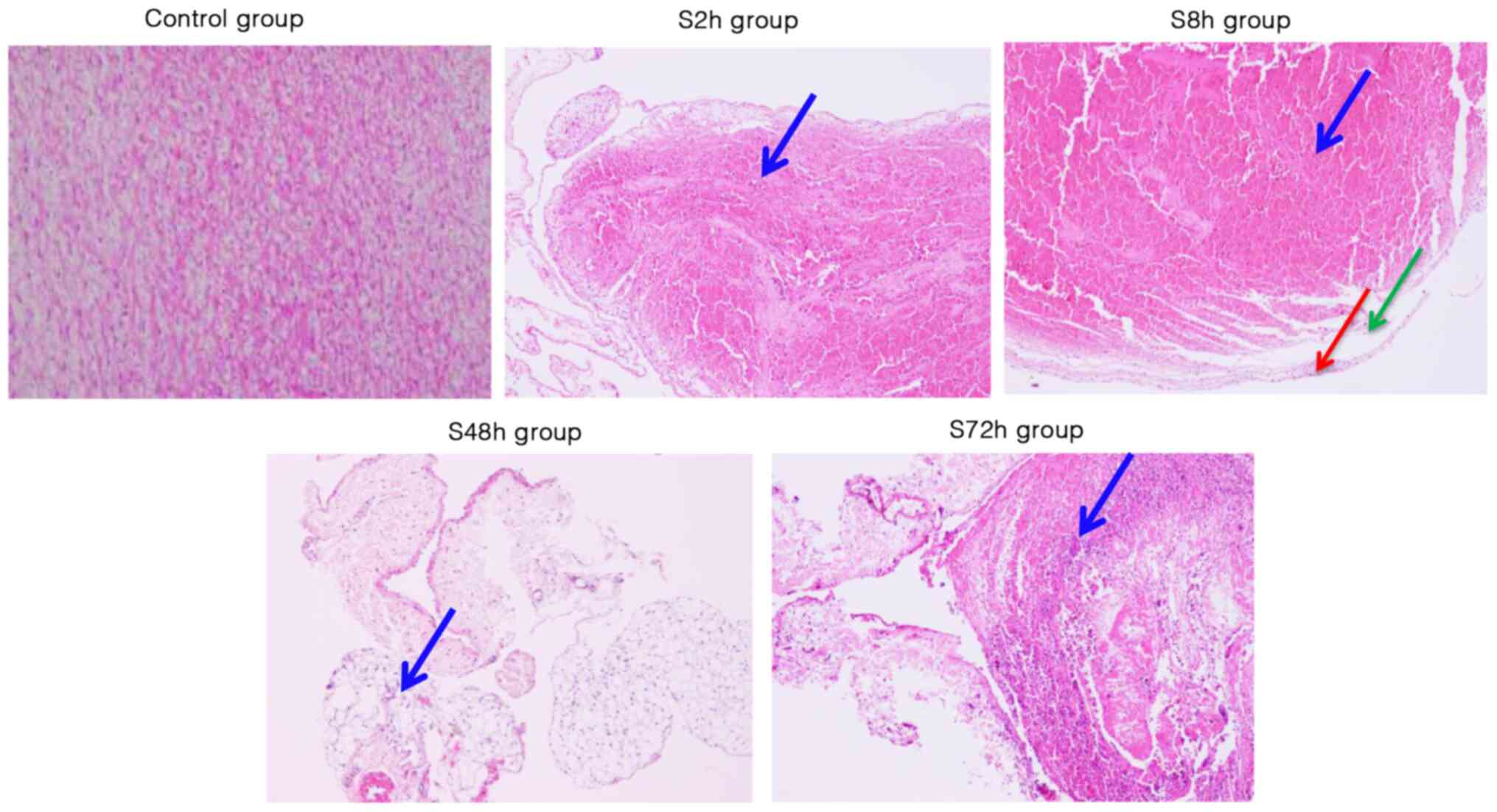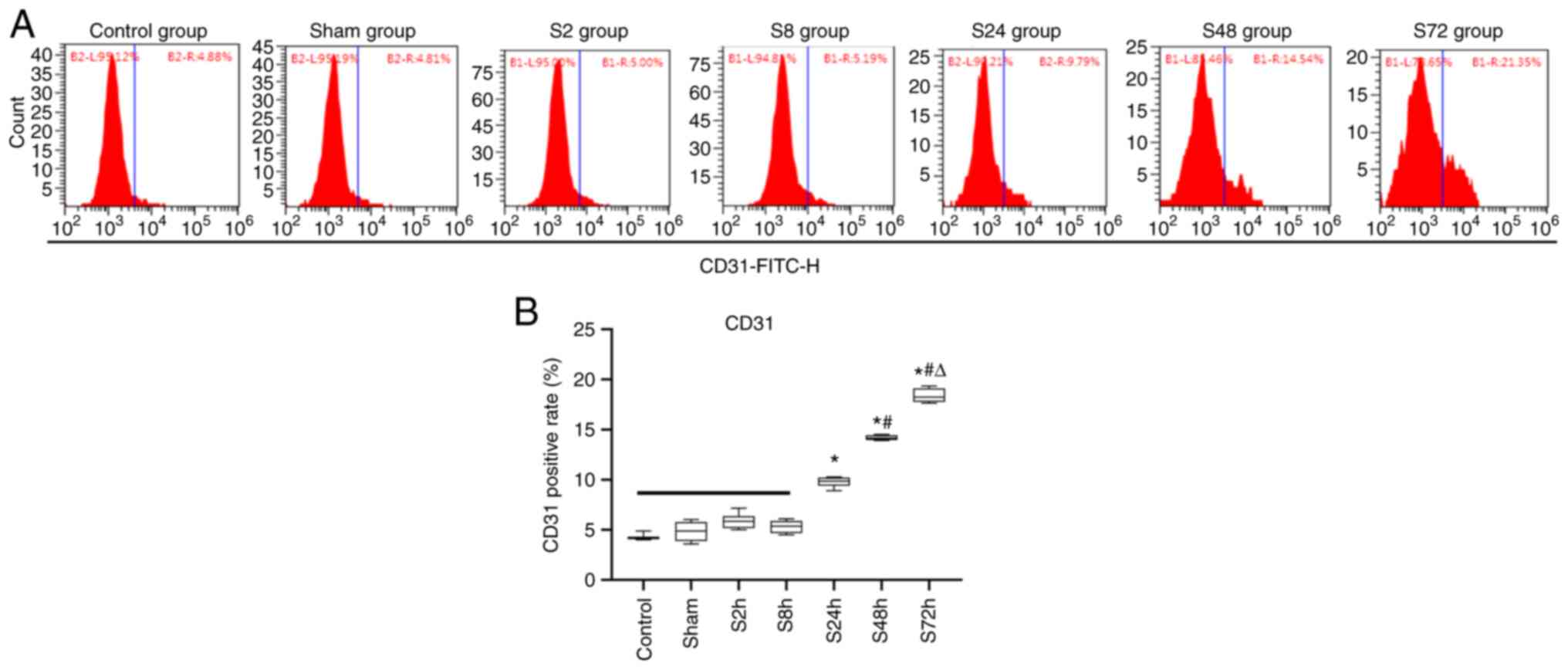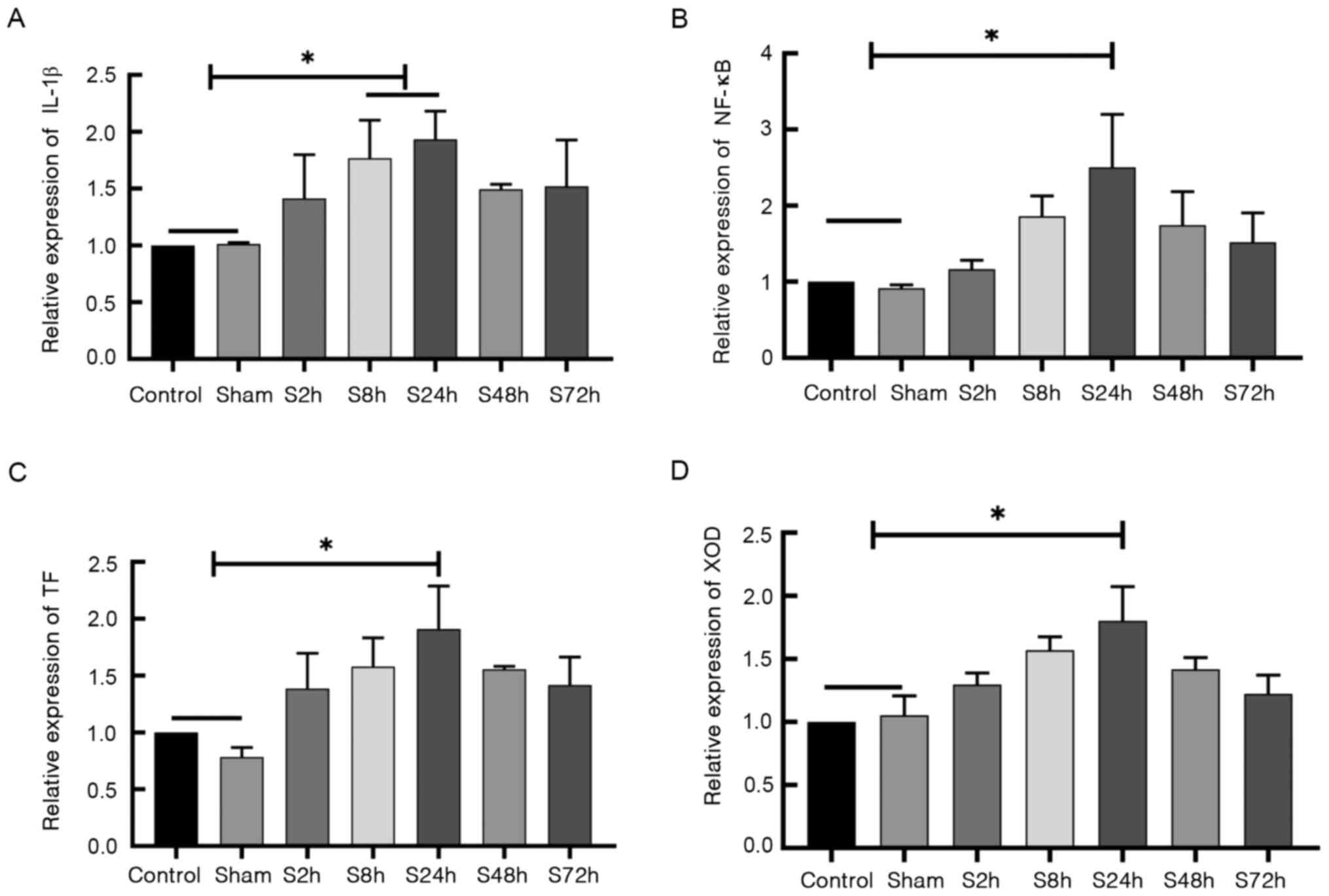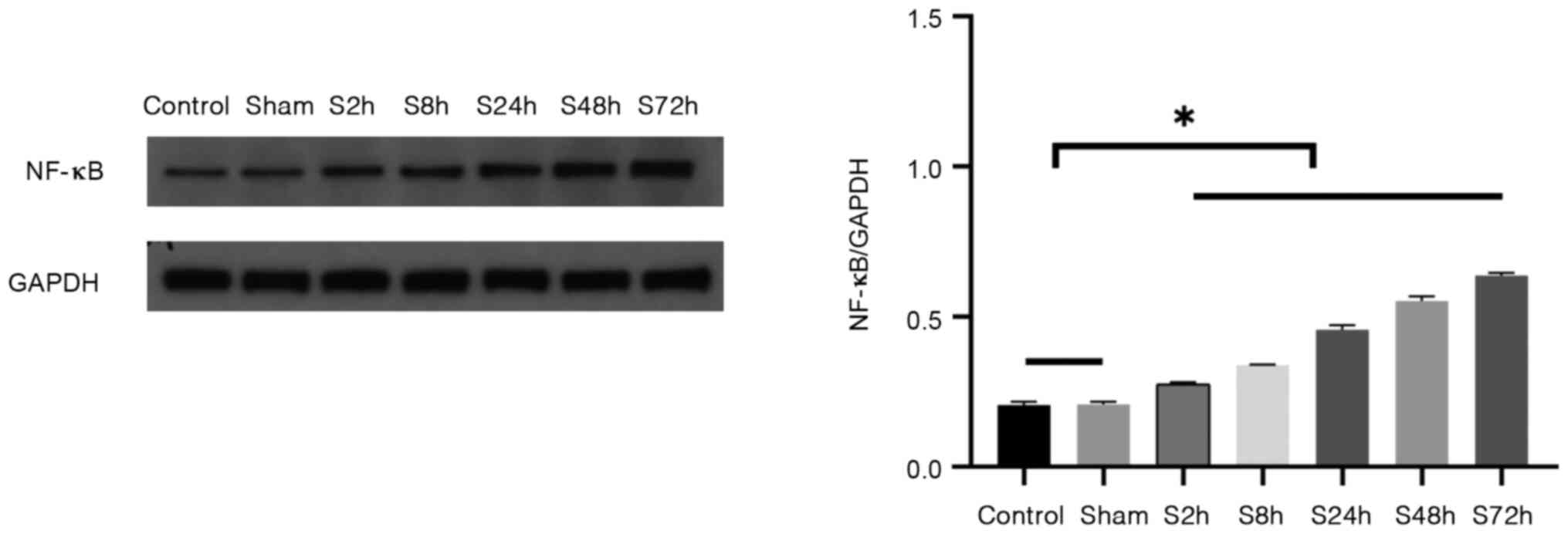|
1
|
Crop MJ, Siemes C, Berendes P, van der
Straaten F, Willemsen S and Levin MD: Influence of C-reactive
protein levels and age on the value of D-dimer in diagnosing
pulmonary embolism. Eur J Haematol. 92:147–155. 2014.PubMed/NCBI View Article : Google Scholar
|
|
2
|
Ibrahim NA, Hassan FM, Elgari MM and
Abdalla SE: Risk factors for deep vein thrombosis of lower
extremities in sudanese women. Vasc Health Risk Manag. 14:157–164.
2018.PubMed/NCBI View Article : Google Scholar
|
|
3
|
Li Y, Wei WF, Lin SM, Liu ZJ, Huang HC and
Qiu WL: Expression of inflammatory factors in pregnant women with
acute venous thrombosis and its relationship with the degree of
vascular injury. Guangdong Med J. 35:558–560. 2014.(In
Chinese).
|
|
4
|
Alexander P and Giangola G: Deep venous
thrombosis and pulmonary embolism: Diagnosis, prophylaxis, and
treatment. Ann Vasc Surg. 13:318–327. 1999.PubMed/NCBI View Article : Google Scholar
|
|
5
|
Kahn SR, Shrier I, Julian JA, Ducruet T,
Arsenault L, Miron MJ, Roussin A, Desmarais S, Joyal F, Kassis J,
et al: Determinants and time course of the postthrombotic syndrome
after acute deep venous thrombosis. Ann Intern Med. 149:698–707.
2008.PubMed/NCBI View Article : Google Scholar
|
|
6
|
Kahn SR: The post thrombotic syndrome.
Thromb Res. 127 (Suppl 3):S89–S92. 2011.PubMed/NCBI View Article : Google Scholar
|
|
7
|
Zhang T, Li Q, Wang L and Li G: Expression
variations and clinical significance of MMP-1, MMP-2 and
inflammatory factors in serum of patients with deep venous
thrombosis of lower extremity. Exp Ther Med. 17:181–186.
2019.PubMed/NCBI View Article : Google Scholar
|
|
8
|
Zhou J, Pang L, Zuo B and Yan B:
Discussion on the clinical application of deep vein thrombosis risk
assessment module. Attend Pract and Res. 11:117–118. 2015.(In
Chinese).
|
|
9
|
Torbicki A, Perrier A, Konstantinides S,
Agnelli G, Galiè N, Pruszczyk P, Bengel F, Brady AJ, Ferreira D,
Janssens U, et al: Guidelines on the diagnosis and management of
acute pulmonary embolism: The task force for the diagnosis and
management of acute pulmonary embolism of the European society of
cardiology (ESC). Eur Heart J. 29:2276–2315. 2008.PubMed/NCBI View Article : Google Scholar
|
|
10
|
Goekoop RJ, Steeghs N, Niessen RW, Jonkers
GJ, Dik H, Castel A, Gelder LW, Vlasveld LT, van Klink RC, Planken
EV and Huisman MV: Simple and safe exclusion of pulmonary embolism
in outpatients using quantitative D-dimer and wells' simplified
decision rule. Thromb Haemostasis. 97:146–150. 2007.PubMed/NCBI
|
|
11
|
Deem TL and Cook-Mills JM: Vascular cell
adhesion molecule 1 (VCAM-1) activation of endothelial cell matrix
metalloproteinases: Role of reactive oxygen species. Blood.
104:2385–2393. 2004.PubMed/NCBI View Article : Google Scholar
|
|
12
|
Erusalimsky JD: Vascular endothelial
senescence: From mechanisms to pathophysiology. J Appl Physiol
(1985). 106:326–332. 2009.PubMed/NCBI View Article : Google Scholar
|
|
13
|
Fan LM, Douglas G, Bendall JK, McNeill E,
Crabtree MJ, Hale AB, Mai A, Li JM, McAteer MA, Schneider JE, et
al: Endothelial cell-specific reactive oxygen species production
increases susceptibility to aortic dissection. Circulation.
129:2661–2672. 2014.PubMed/NCBI View Article : Google Scholar
|
|
14
|
Wakefield TW, Myers DD and Henke PK:
Mechanisms of venous thrombosis and resolution. Arterioscler Thromb
Vasc Biol. 28:387–391. 2008.PubMed/NCBI View Article : Google Scholar
|
|
15
|
Kanaji N, Sato T, Nelson A, Wang X, Li Y,
Kim M, Nakanishi M, Basma H, Michalski J, Farid M, et al:
Inflammatory cytokines regulate endothelial cell survival and
tissue repair functions via NF-κB signaling. J Inflam Res.
4:127–138. 2011.PubMed/NCBI View Article : Google Scholar
|
|
16
|
Phan SH, Gannon DE, Varani J, Ryan US and
Ward PA: Xanthine oxidase activity in rat pulmonary artery
endothelial cells and its alteration by activated neutrophils. Am J
Pathol. 134:1201–1211. 1989.PubMed/NCBI
|
|
17
|
Ma J, Li X, Wang Y, Yang Z and Luo J:
Rivaroxaban attenuates thrombosis by targeting the NF-κB signaling
pathway in a rat model of deep venous thrombus. Int J Mol Med.
40:1869–1880. 2017.PubMed/NCBI View Article : Google Scholar
|
|
18
|
Humphries J, Gossage JA, Modarai B,
Burnand KG, Sisson TH, Murdoch C and Smith A: Monocyte
urokinase-type plasminogen activator up-regulation reduces thrombus
size in a model of venous thrombosis. J Vasc Surg. 50:1127–1134.
2009.PubMed/NCBI View Article : Google Scholar
|
|
19
|
Livak KJ and Schmittgen TD: Analysis of
relative gene expression data using real-time quantitative PCR and
the 2(-Delta Delta C(T)) method. Methods. 25:402–408.
2001.PubMed/NCBI View Article : Google Scholar
|
|
20
|
Feng YM, Chen XH and Zhang X: Roles of
PECAM-1 in cell function and disease progression. Eur Rev Med
Pharmacol Sci. 20:4082–4088. 2016.PubMed/NCBI
|
|
21
|
Woodfin A, Voisin MB and Nourshargh S:
PECAM-1: A multi-functional molecule in inflammation and vascular
biology. Arterioscler Thromb Vasc Biol. 27:2514–2523.
2007.PubMed/NCBI View Article : Google Scholar
|
|
22
|
Tuzcu ZB, Asicioglu E, Sunbul M, Ozben B,
Arikan H and Koc M: Circulating endothelial cell number and markers
of endothelial dysfunction in previously preeclamptic women. Am J
Obstet Gynecol. 213(533)2015.PubMed/NCBI View Article : Google Scholar
|
|
23
|
van de Veerdonk FL and Netea MG: New
insights in the immunobiology of IL-1 family members. Front
Immunol. 4(167)2013.PubMed/NCBI View Article : Google Scholar
|
|
24
|
Moriwaki Y, Yamamoto T and Higashino K:
Distribution and pathophysiologic role of molybdenum-containing
enzymes. Histol Histopathol. 12:513–524. 1997.PubMed/NCBI
|
|
25
|
Zeki S, Miura S, Suzuki H, Watanabe N,
Adachi M, Yokoyama H, Horie Y, Saito H, Kato S and Ishii H:
Xanthine oxidase-derived oxygen radicals play significant roles in
the development of chronic pancreatitis in WBN/Kob rats. J
Gastroenterol Hepatol. 17:606–616. 2002.PubMed/NCBI View Article : Google Scholar
|
|
26
|
Lassegue B, Martin AS and Griendling KK:
Biochemistry, physiology, and pathophysiology of NADPH oxidases in
the cardiovascular system. Circ Res. 110:1364–1390. 2012.PubMed/NCBI View Article : Google Scholar
|
|
27
|
Nomura J, Busso N, Ives A, Matsui C,
Tsujimoto S, Shirakura T, Tamura M, Kobayashi T, So A and Yamanaka
Y: Xanthine oxidase inhibition by febuxostat attenuates
experimental atherosclerosis in mice. Sci Rep.
4(4554)2014.PubMed/NCBI View Article : Google Scholar
|
|
28
|
Breitenstein A, Tanner FC and Luscher TF:
Tissue factor and cardiovascular disease: Quo vadis? Circ J.
74:3–12. 2010.PubMed/NCBI View Article : Google Scholar
|
|
29
|
Yao XJ, Zhao ZM and Xia T: Inflammation
and Thrombosis. Chinese J Thromb Hemostasis. 21:190–192. 2015.(In
Chinese).
|
|
30
|
Lopez-Vilchez I, Galan AM, Hernandez MR,
Caballo C, Roque M, Diaz-Ricart M, White JG and Escolar G:
Platelet-associated tissue factor enhances platelet reactivity and
thrombin generation in experimental studies in vitro. Thromb Res.
130:e294–e300. 2012.PubMed/NCBI View Article : Google Scholar
|
|
31
|
Li J and Yan W: Relationship between
neutrophil activation and pathological progression of venous
thrombosis. Chinese J Trad Med Traumatology Orthopedics. 17:70–72.
2009.(In Chinese).
|
|
32
|
Lawrence T: The nuclear factor NF-kappaB
pathway in inflammation. Cold Spring Harb Perspect Biol.
1(a001651)2009.PubMed/NCBI View Article : Google Scholar
|
|
33
|
Beg AA and Baldimore D: An essential role
for NF-kappaB in preventing TNF-alpha-induced cell death. Science.
274:782–784. 1996.PubMed/NCBI View Article : Google Scholar
|
|
34
|
Blix K, Jensvoll H, Brækkan SK and Hansen
JB: White blood cell count measured prior to cancer development is
associated with future risk of venous thromboembolism-the tromsø
study. PLoS One. 8(e73447)2013.PubMed/NCBI View Article : Google Scholar
|
|
35
|
Boyle S, White RH, Brunson A and Wun T:
Splenectomy and the incidence of venous thromboembolism and sepsis
in patients with immune thrombocytopenia. Blood. 121:4782–4790.
2013.PubMed/NCBI View Article : Google Scholar
|
|
36
|
Malgor RD and Labropoulos N: Re-modelling
of venous thrombosis. Phlebology. 28 (Suppl 1):S25–S28.
2013.PubMed/NCBI View Article : Google Scholar
|
|
37
|
Deatrick KB, Obi A, Luke CE, Elfline MA,
Sood V, Upchurch GR Jr, Jaffer F, Wakefield TW and Henke PK: Matrix
metalloproteinase-9 deletion is associated with decreased mid-term
vein wall fibrosis in experimental stasis DVT. Thromb Res.
132:360–366. 2013.PubMed/NCBI View Article : Google Scholar
|
|
38
|
Ripplinger CM, Kessinger CW, Li C, Kim JW,
McCarthy JR, Weissleder R, Henke PK, Lin CP and Jaffer FA:
Inflammation modulates murine venous thrombosis resolution in vivo:
Assessment by multimodal fluorescence molecular imaging.
Arterioscler Thromb Vasc Biol. 32:2616–2624. 2012.PubMed/NCBI View Article : Google Scholar
|
|
39
|
Rodriguez AL, Wojcik BM, Wrobleski SK,
Myers DD Jr, Wakefield TW and Diaz JA: Statins, inflammation and
deep vein thrombosis: A systematic review. J Thromb Thrombolysis.
33:371–382. 2012.PubMed/NCBI View Article : Google Scholar
|



















